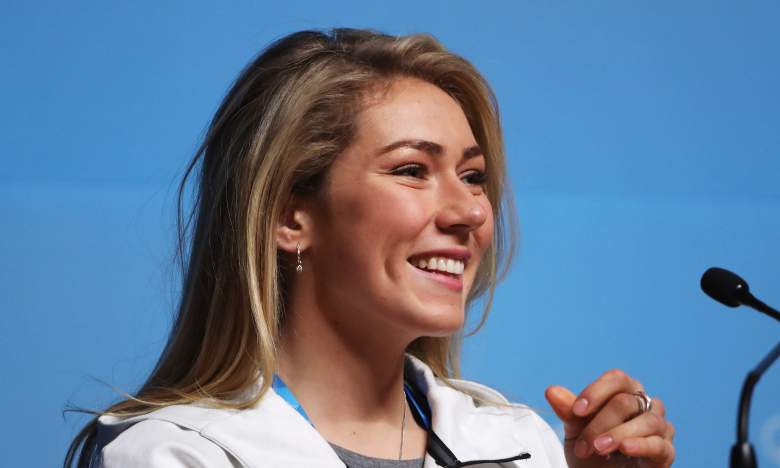
With Mikaela Shiffrin being compared to the likes of Lindsey Vonn and Michael Phelps, all eyes are on the skier in PyeongChang. That has a lot of people wondering about Shiffrin’s diet and workout. A consistent diet and fitness routine are part of her success.
Shiffrin has a chance of bringing home three gold medals in South Korea and is already “the youngest ever Olympic slalom champion,” according to CNN. “With Mikaela it’s a combination of hard work, being really talented, being really focused and having the drive and wanting to win,” her agent told CNN.
Here’s what you need to know:
1. Mikaela Calls Pasta Her ‘Super Food’
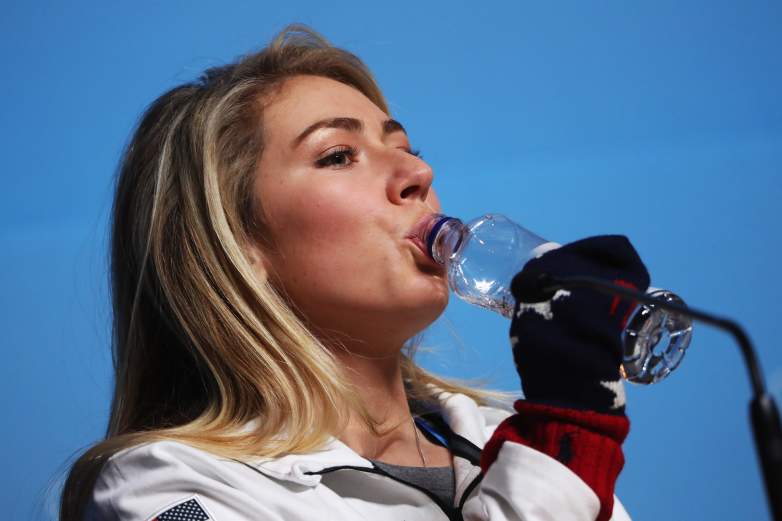
Mikaela Shiffrin.
Despite the fad of no-carb diets, for a high-level athlete like Mikaela Shiffrin, carbs equal energy. She has called pasta her “super food.” She incorporates carbohydrates into every meal, according to Good Housekeeping.
“They’re essential in providing the energy I need, especially on race days that can last 12 hours,” Shiffrin said, according to the magazine. “I wouldn’t eat a 1,000-calorie bowl of spaghetti for dinner, but I’ve always loved pasta and think it’s a good addition to any meal and a great base for pretty much any vegetable. It’s also great when I have a nervous stomach before race day.”
2. Mikaela Believes in Moderation in Her Diet
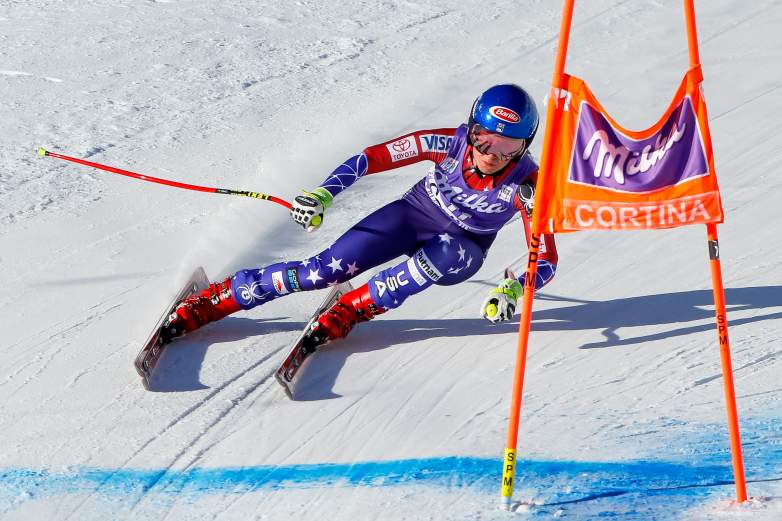
GettyMikaela Shiffrin competes during the Audi FIS Alpine Ski World Cup Women’s Downhill on January 20, 2018 in Cortina d’Ampezzo, Italy.
Although she likes a bowl of pasta, Mikaela’s diet revolves around moderation and balance, according to Good Housekeeping.” Balance and moderation are the basis for my diet, though, so I also make sure to incorporate plenty of protein, fruits, and veggies throughout the day,” she told the magazine.
“I feel like I have the metabolism of a pregnant woman! I have to watch what I eat,” Mikaela told Clean Eating Magazine. “It’s important. I go through phases where I write down everything I eat and I keep track of calories. For the most part, I have a pretty good gauge of the portions that I should have: carbs versus protein, versus vegetables. The easiest way for me to have energy is to have some carbs. I always have pasta after a race and after training to fuel me up and get me ready for tomorrow.”
3. She Eats 3,000 Calories a Day
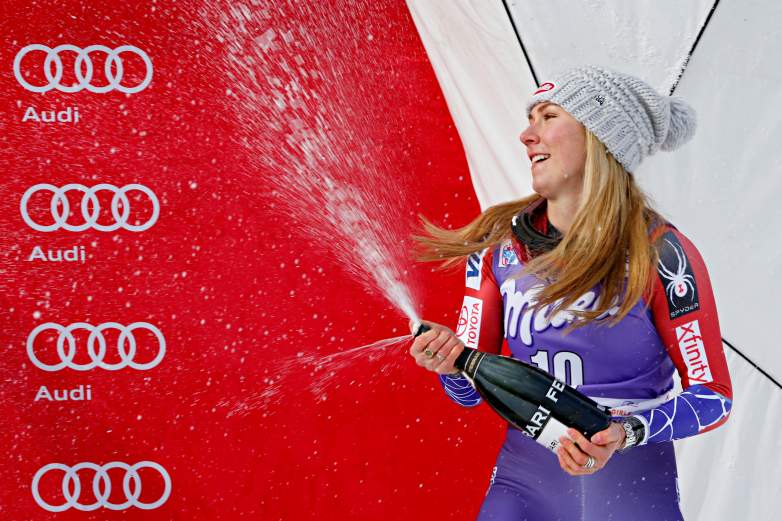
Mikaela Shiffrin of USA takes 3rd place during the Audi FIS Alpine Ski World Cup Women’s Downhill on January 19, 2018 in Cortina d’Ampezzo, Italy.
According to Eating Well, Mikaela says, “I usually try to eat 3,000 calories. Carbs are an essential part of my meals—I can’t survive without them, especially on race days, which can last 12 hours.”
She described her specific meal plan to Eating Well: “Breakfast is two eggs and two pieces of toast. Or sometimes cereal (or oatmeal) and fruit. Lunch is chicken or fish, plus salad and a carb, like pasta. Dinner looks a lot like lunch for me: chicken or steak, pasta, and salad or some other vegetables.” She likes to snack on nuts and seeds and dried mangoes, according to the site.
4. Mikaela Has a Workout Routine Designed for Balance & Glute Strength
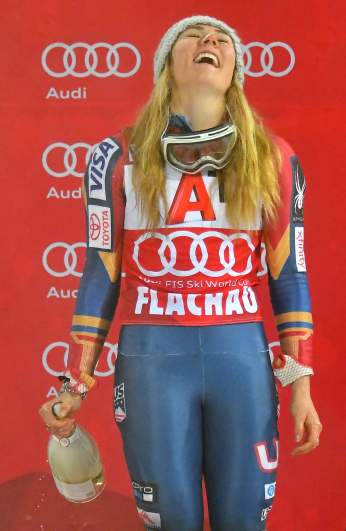
Mikaela Shiffrin.
Mikaela Shiffrin’s workout routine is varied but designed to focus on balance and glute strength. “…you’ll see her juggle while skipping between balance disks (like we said, balls to the wall!), walk on top of standing dumbbells, and triple-step jump up the stairs. All things to improve her balance (crucial on the downhill) and develop serious glute strength to power her turns,” reports Women’s Health Magazine.
She also works on cardio, and sometimes sprints while pulling a sled with weights, according to CNN. Jeff Lackie, her trainer, explained to NorthJersey.com: “You have to have the strength to resist those forces as well as be able to move really quickly,” he explained.”
The newspaper reports that Mikaela Shiffrin “does 90-minute workouts twice a day, five times a week, to keep in top shape.”
5. Mikaela Lifts Weights to Increase Her Body Mass
Mikaela posts photos on Instagram showing her engaged in weightlifting routines. CNN reports that Shiffrin has worked to put on mass. “Shiffrin stands 5 feet 7 inches tall and weighs 145 pounds, similar to four years ago but with more ‘baby fat’ converted to muscle,” the news site reports.
According to CNN, Shiffrin’s weightlifting routine focuses on squats “and various types of lifts with a weighted bar, emphasizing ‘eccentric overload training.'” That is the “phase when the muscle is lengthening, which is a more efficient way of targeting the muscle than concentrating on how much she can lift,” CNN reports. She also uses a device called GymAware, according to CNN.
That machine costs $2,200, “looks like a small bomb, and measures lifting metrics like bar angle and velocity,” according to OutsideOnline.